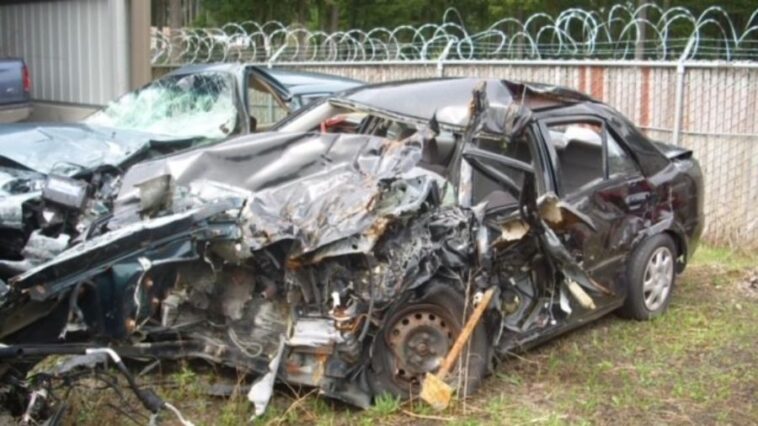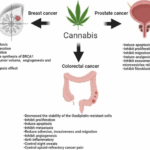
Kitsap County’s Alarming DUI Trends: An In-Depth Look
The Kitsap County Sheriff’s Office has recently reported a spike in DUI-related incidents that has many in the legal community and local residents on edge. In 2024, there were 240 DUI incidents, marking the highest number since the 1990s. This troubling trend has raised questions about why impaired driving remains such a persistent problem and what steps must be taken going forward.
In this opinion editorial, we take a closer look at the reported surge in impaired driving cases, the legal consequences for those involved, and the ripple effect on families and communities. We also explore alternative transportation options, law enforcement strategies, and community outreach initiatives in order to better understand the tangled issues behind this phenomenon.
Breaking Down the Data: A Closer Look at Rising DUI Incidents
The Numbers Behind the Trend
According to the Kitsap County Sheriff’s Office, law enforcement handled 240 DUI incidents in 2024. This is not just a number; it represents hundreds of lives impacted by a choice that some might consider a lapse in judgment. Last year alone, 14 people lost their lives in DUI crashes in the county, and many more were injured in collisions triggered by impaired driving.
When we compare these statistics to national data – where the National Highway Transportation Safety Administration (NHTSA) reported 12,429 DUI fatalities in 2023 – it is clear that this is not just a local problem. The ripple effect of these crashes is felt across states, communities, and households. It is a reminder that the road to safety is full of problems and that every incident brings with it countless personal tragedies.
Comparing Past and Present Figures
The return of numbers reminiscent of the 1990s opens up a discussion on long-standing issues that continue to side with dangerous decision-making. The reappearance of these stubborn statistics begs the question: why, in an era of heightened awareness and technological advancements, are we still facing such a dramatic number of DUI incidents?
Breaking down the figures provides important insight into this matter. The timeline shows that while overall traffic fatalities in certain regions have decreased due to stringent seatbelt laws and improved vehicle safety standards, impaired driving incidents have proven to be a wound that is slow to heal. The data indicates that impaired driving remains one of the key contributors to fatal and serious injury outcomes in vehicular accidents.
Legal Consequences: What DUI Offenders Face in the Courtroom
Understanding DUI Charges and Their Repercussions
For those charged with DUI, the legal implications extend far beyond a night of poor choices. An impaired driving conviction is often associated with hefty fines, a suspended driver’s license, and, in some cases, even jail time. The legal system is tasked with balancing deterrence, punishment, and rehabilitation – a trio of goals that are not easy to align.
Law enforcement officials have repeatedly warned that even if a person is fortunate enough to avoid causing serious injury or death, they can still expect arrest, fines, and long-lasting legal repercussions. The courts today are heavily focused on affirmative measures designed to protect communities, and DUI convictions are treated very seriously as they often involve a full chain of consequences that go well beyond the immediate legal penalties.
The Courtroom Reality for Impaired Drivers
The legal process for DUI cases involves multiple stages – from arrest and investigation to trial and sentencing. In many cases, individuals with DUI charges must contend with confusing bits of evidence, tangled issues regarding blood alcohol content measurements, and often nerve-racking courtroom hearings. This combination of factors can make the process both intimidating and overwhelming.
Consider the following list of elements that play into DUI cases:
- Evidence gathering and interpretation
- Expert testimonials on the validity of breathalyzer tests
- Assessment of the road conditions and driving behavior during the incident
- Damage to victims and the broader community impact
Each of these components carries its own set of twists and turns. The legal system must decide not only on an individual’s guilt or innocence based on evidence but also consider the broader social implications of their ruling. The balance the courts strive for is nothing short of a Herculean effort in working through a maze of legal and personal intricacies.
Personal Stories and Community Impact
The Human Side of DUI Collisions
Beyond the courtrooms and statistical reports, DUI incidents leave in their wake a trail of personal loss and community grief. Family members of victims, like Ashley Bonus and Terry Gammons, have shared their heart-wrenching stories of loss that occurred due to impaired driving. Their narratives underscore how the aftermath of such tragedies extends far beyond the immediate pain of losing a loved one.
These personal accounts illuminate the devastating ripple effects of DUI incidents. The emotional scars left behind by a single moment of impaired judgment highlight how essential it is for communities to not only tighten legal repercussions but also bolster support and counseling services for victims’ families.
Community Reactions and Calls for Action
Residents across Kitsap County and beyond express a desire for more proactive measures. Community meetings, public safety campaigns, and local outreach initiatives have all been part of the discussion on how to reduce the spread of DUI-related tragedies.
Some community members argue that, while enforcement is critical, it is equally important to focus on the prevention of DUI incidents. This includes investing in educational programs, increasing awareness of the potential legal consequences, and providing families with the tools to help prevent such situations before they occur.
Safer Alternatives: How to Avoid the DUI Trap
Exploring Transportation Options
One of the primary takeaways from law enforcement officials is that there are many alternatives to getting behind the wheel while under the influence. The phrase “you don’t have to drink and drive” has been repeatedly emphasized because there are plenty of options available for those who choose to drink.
Alternative modes of transport include ride-sharing services like Uber and Lyft, traditional taxi services, and even public transportation options. Some people may turn to the reliable help of friends or family; in a pinch, even calling a parent’s car can provide a safe ride home.
To organize these ideas, let’s review a simple table outlining common safe alternatives:
| Option | Description | Advantages |
|---|---|---|
| Ride-Sharing Services | Companies like Uber and Lyft offer rides at short notice. | Convenient, often available 24/7, GPS tracking for accountability. |
| Taxi Cabs | Traditional taxi services that can be booked by phone. | Widely available in many communities, familiar service. |
| Public Transportation | Buses, trams, or subways operated by local governments. | Cost-effective, environmentally friendly. |
| Friends and Family | Rely on someone sober in your social circle. | Personal assurance, bond of trust. |
Highlighting the Importance of Planning Ahead
One of the less discussed yet key parts of preventing DUI incidents is planning ahead. Whether it’s scheduling a designated driver or pre-booking a ride-sharing service, the planning is a must-have step in ensuring everyone’s safety. By taking a few moments to figure a path home before a night of drinking, individuals can avoid the nerve-racking scenario of impaired driving altogether.
Lists can be very useful when planning for a safe night out:
- Decide on a designated driver before starting the evening.
- Research local transportation options and have them on standby.
- Keep emergency contact numbers programmed into your phone.
- Plan a budget for transportation to avoid last-minute scrambles.
These straightforward steps can help to steer through what might otherwise become a dangerous situation, reducing the likelihood of tragic outcomes.
The Role of Law Enforcement and Community Outreach
Enhanced Policing Tactics and Campaigns
Kitsap County Deputy Joshua Buovino and other law enforcement personnel have been actively involved in spreading the message that drinking and driving is not just a personal risk, but a community hazard. Officers are taking steps to get into communities and educate the public about the consequences of impaired driving.
This proactive approach involves routine DUI checkpoints, public service announcements, and partnerships with local businesses to promote safe transportation. Law enforcement officials are not only focused on catching offenders but are also committed to preventing incidents before they occur. The focus is on the long game – building trust, educating through community outreach, and reducing the overall rate of DUI incidents.
Community Programs and Public Awareness Initiatives
Several community programs have been designed to tackle the twisted issues surrounding DUI incidents. These programs range from educational workshops in high schools to neighborhood seminars aimed at adults. The objective is to ensure that everyone understands both the legal and personal consequences of drinking and driving.
Such efforts are critical in areas where the legal system is contending with both a surge in DUI cases and the burden of fatal collisions. Public awareness campaigns serve as both a deterrent and an essential support network for those at risk. In some cities, law enforcement and public health officials work together to create multi-layered strategies that combine enforcement with education.
Here is a summary of some recommended community initiatives:
- Workshops and Seminars: Attended by community leaders, legal experts, and law enforcement officers to discuss prevention and legal consequences.
- School Programs: Educational outreach to help younger generations understand the full scope of DUI-related dangers.
- Partnerships with Local Bars: Collaborations to promote responsible drinking and the availability of designated driver services.
- Social Media Campaigns: Informative posts and videos that share real-life stories and legal insights on DUI cases.
Legal and Policy Reforms: Charting a Clearer Path Forward
Proposals for Policy Changes
The persistent rise in DUI incidents has sparked discussions about policy reforms. Some legal experts suggest that stricter penalties might be necessary in order to drive home the seriousness of impaired driving. Others advocate for a more educational approach, emphasizing the need for community outreach and better support for individuals at risk.
Policy proposals currently under discussion include:
- Enhanced administrative penalties, such as longer license suspensions.
- Increased fines and mandatory alcohol education programs for offenders.
- Investment in public transportation and safe ride initiatives.
- Better cross-agency collaboration between law enforcement and public health organizations.
It is imperative for policy makers to find a balance between punitive measures and supportive interventions. While tougher penalties might deter some potential offenders, the overall solution may well lie in addressing the underlying issues that lead to impaired driving in the first place. As reform advocates point out, effective legislation must find a way to reduce both the number of incidents and the tragic outcomes associated with them.
Learning from Other Jurisdictions
Taking a closer look at jurisdictions that have successfully reduced DUI incidents can offer valuable insights. For instance, some regions have implemented rigorous sobriety checkpoints combined with robust public education programs. Others have streamlined the legal process for DUI cases to ensure consistent and fair penalties for offenders.
A comparison of different policy approaches may help local lawmakers make informed decisions. In many cases, the fine points of such reforms involve the little details of how the legal process is structured, the funding available for public transportation, and clear guidelines for the administration of penalties. These subtle parts of the policy can sometimes be the deciding factor between success and further stagnation in reducing DUI incidents.
Looking Ahead: A Call for Collective Action
Uniting the Legal Community, Law Enforcement, and Citizens
Addressing the surge in DUI incidents in Kitsap County requires a combined effort from the legal community, law enforcement officials, and the public. The message “you don’t have to drink and drive” is not just a slogan – it is a call to action that urges everyone to take responsibility for community safety.
At the heart of the issue is the need to protect lives, reduce accidents, and establish trust in the legal and public safety systems. Working together through honest dialogue, community outreach, and sensible legislation can help to figure a path out of this challenging dilemma. It is essential to recognize that the responsibility does not lie with one group alone – it requires a collective effort from all stakeholders.
To ensure lasting change, consider these essential steps:
- Allocate resources to both enforcement and prevention programs.
- Create forums for open discussion among community members, legal experts, and law enforcement.
- Develop targeted campaigns addressing the nerve-racking aspects of DUI consequences.
- Implement and evaluate policies on a continual basis to address any new tangled issues as they emerge.
The Role of Education in Reducing Impaired Driving
Education is a key piece in tackling the problem of impaired driving. By working through the tricky parts of DUI prevention through community classes, high school programs, and media outreach, stakeholders can make substantial strides. Educational initiatives provide individuals with the necessary information to make safer choices and underscore the legal and personal consequences involved in impaired driving.
Some points to consider in educational programs include:
- Emphasizing the critical impact of DUI on both personal lives and community well-being.
- Providing clear examples of how legal actions unfold in DUI cases.
- Sharing personal stories from victims’ families to form an emotional connection with the audience.
- Outlining safe alternatives and strategic planning for a night out.
These educational efforts must be ongoing and evolve over time to address both new trends in DUI behavior and shifts in community dynamics. With a well-informed public, the overall rates of DUI incidents are likely to decline, gradually reducing the number of tragedies on our roads.
Conclusion: Steering Through a Challenging Road Ahead
The rise in DUI-related incidents in Kitsap County is a stark reminder of the continuous challenges communities face when it comes to impaired driving. With numbers reverting to those seen in the 1990s, it is evident that this dangerous behavior remains a persistent threat. Not only do these incidents result in tragic loss of life and serious injuries, but they also send ripples of grief and frustration throughout local communities.
The legal consequences for those caught driving under the influence are severe, and rightly so. These courtroom battles reveal that the twists and turns of DUI cases are more than just legal formalities—they embody the complex web of personal responsibility, public safety, and community trust. Although the legal process for DUI offenders involves a careful balance of punishment and rehabilitation, there is also an imperative need for proactive education and preventive measures.
The message is clear: there are plenty of safe alternatives available. Whether it is through ride-sharing services, taxis, or relying on friends or family, no one needs to risk their life or the lives of others simply by making a poor decision after consuming alcohol. When the legal system, law enforcement, and community programs work in tandem, the outcome can be a substantial reduction in both the number of DUI incidents and their catastrophic consequences.
Ultimately, the solution to reducing impaired driving requires more than just strict laws or harsher penalties—it requires a collaborative effort. We need to get into those fine points of community outreach, steer through the confusing bits of legal processes, and ensure that every individual understands the serious implications of impaired driving. By taking a collective approach that blends effective enforcement with sustained educational initiatives, Kitsap County, along with other communities facing similar challenges, can create a safer environment for everyone.
As we look to the future, it is crucial that policy makers, law enforcement officers, and community members join forces in this mission. With clear-eyed determination and a commitment to proactive change, we have the ability to reduce the nerve-racking number of DUI incidents, restore faith in our legal and public safety systems, and ultimately, protect lives on our roads.
In the end, the journey to a safer community is long and full of challenges, but by managing our way through the tangled issues and taking a closer look at every small distinction in our approach, we can make significant progress. Let today be a call to action: plan ahead, enforce responsibly, and educate continuously, so that every night out ends safely and every road remains a path to opportunity rather than tragedy.
Originally Post From https://mynorthwest.com/crime_blotter/kitsap-county-dui/4077583
Read more about this topic at
Statistics of Alcohol-Related Fatal Crashes
A recent surge in DUI-related deaths in Mobile County has …


